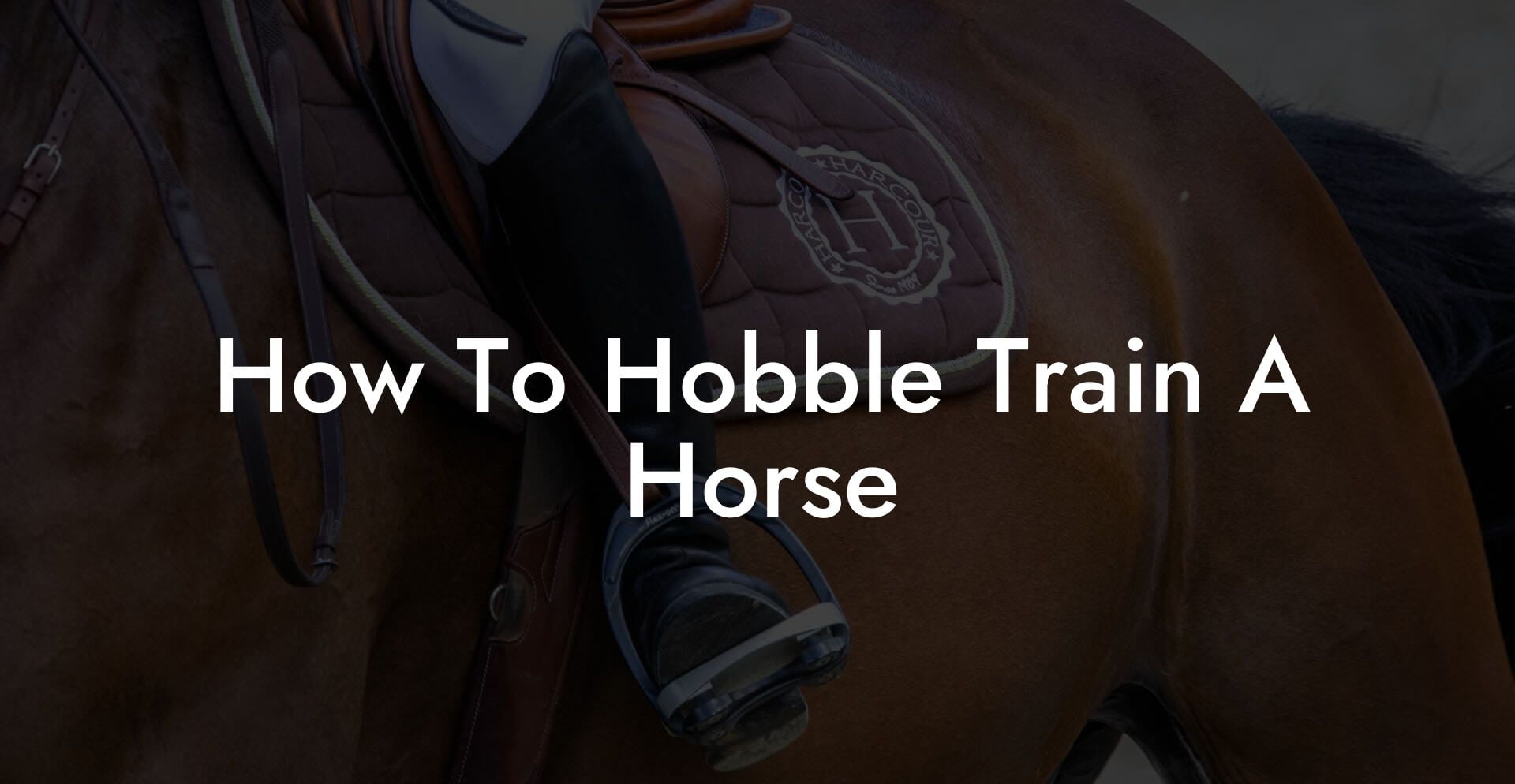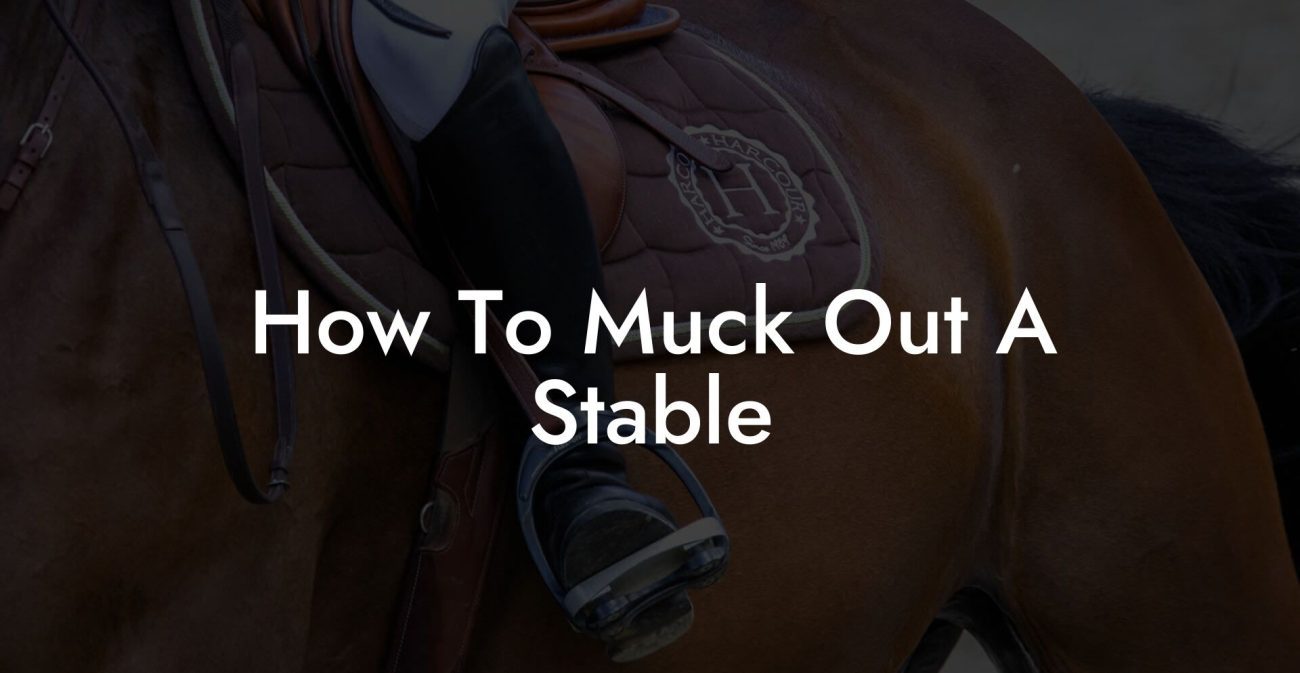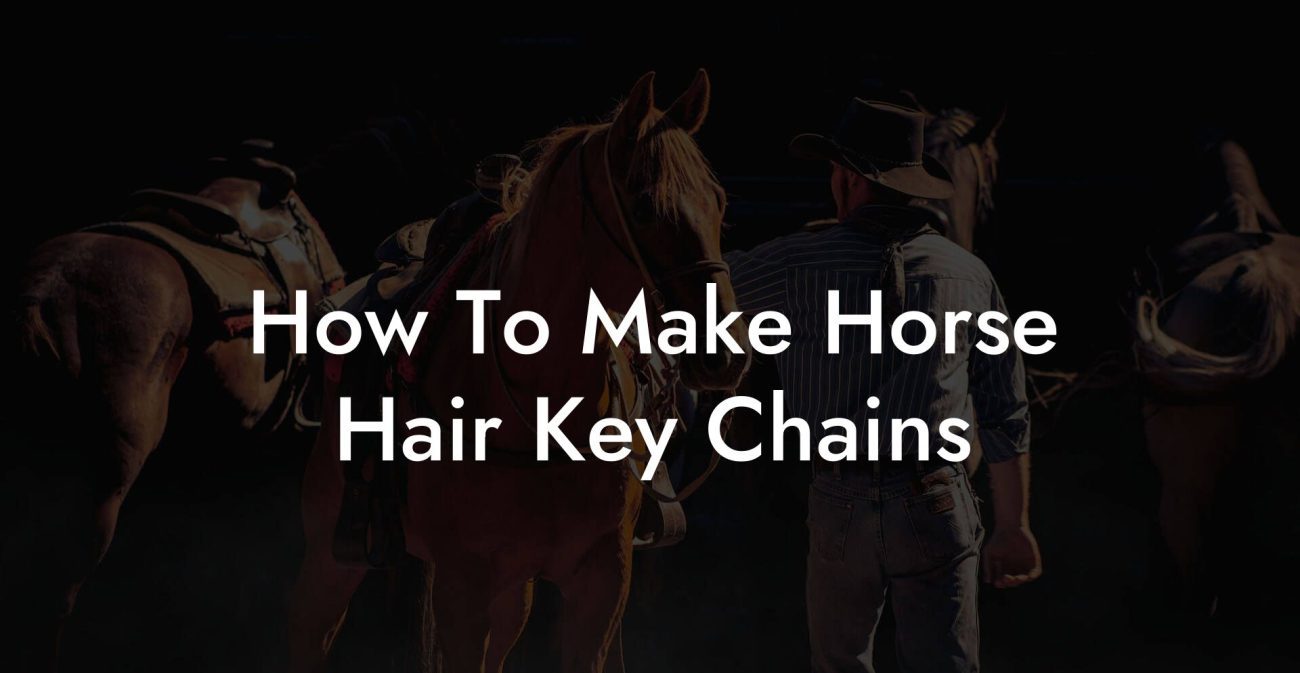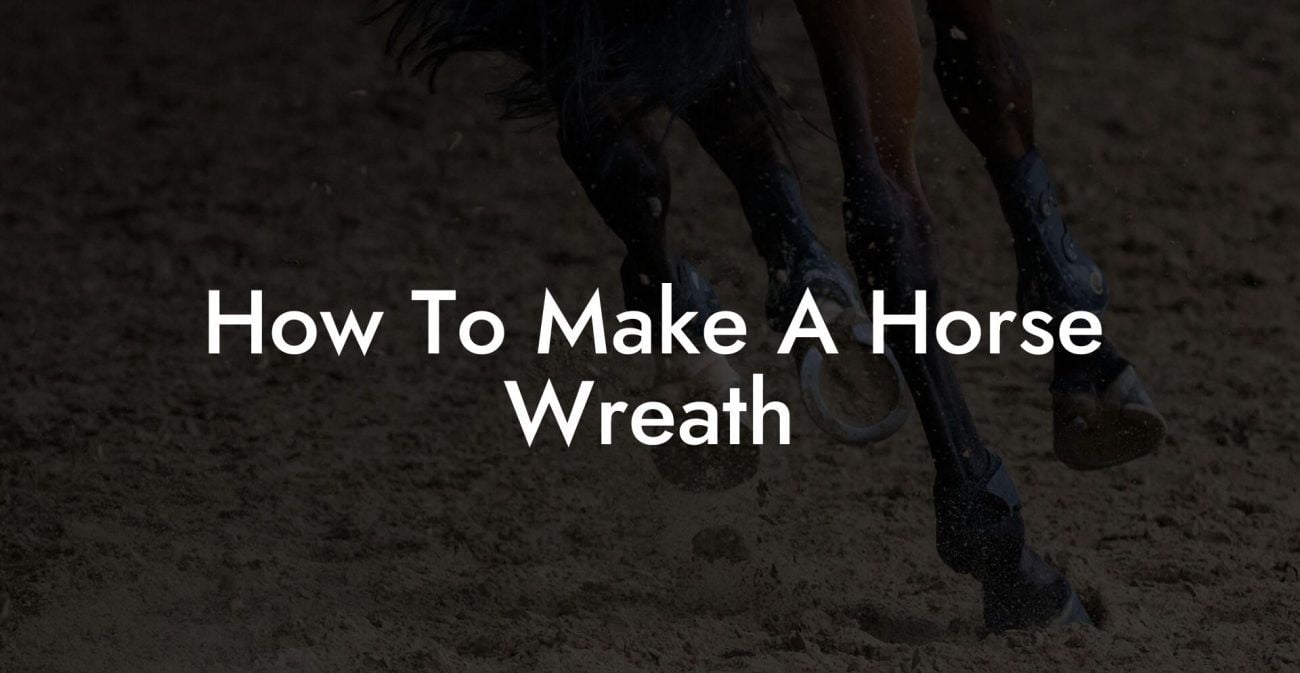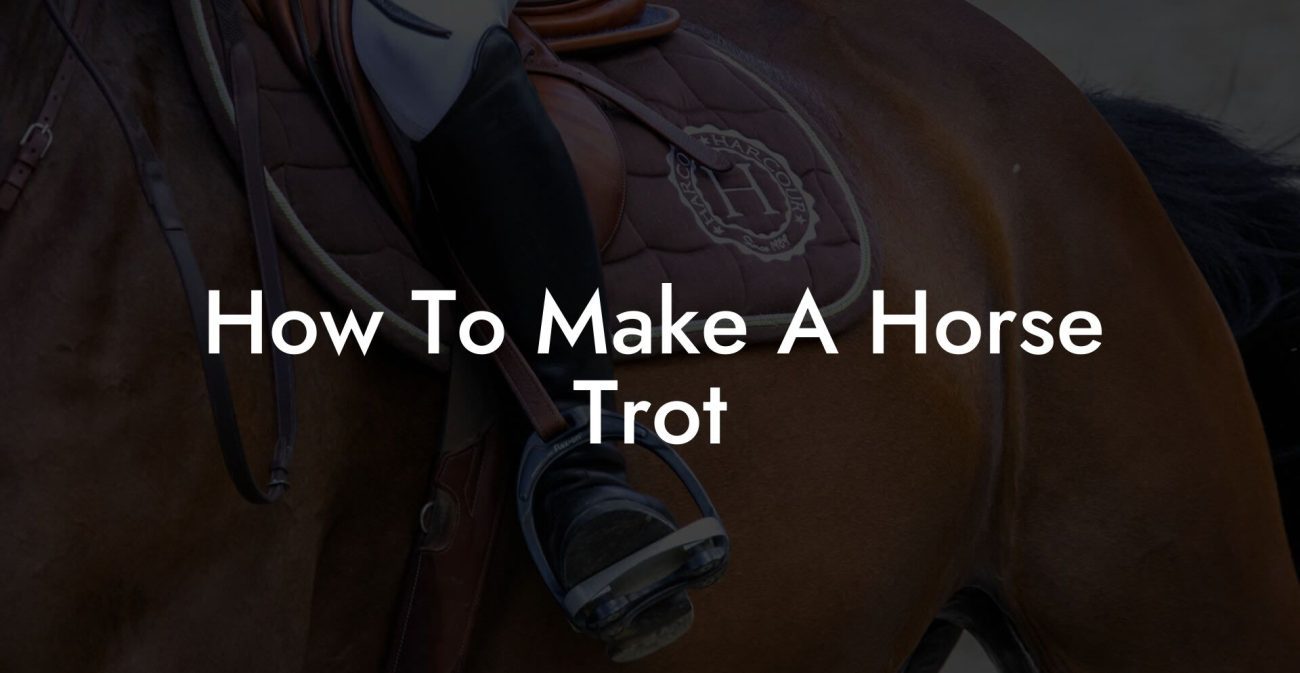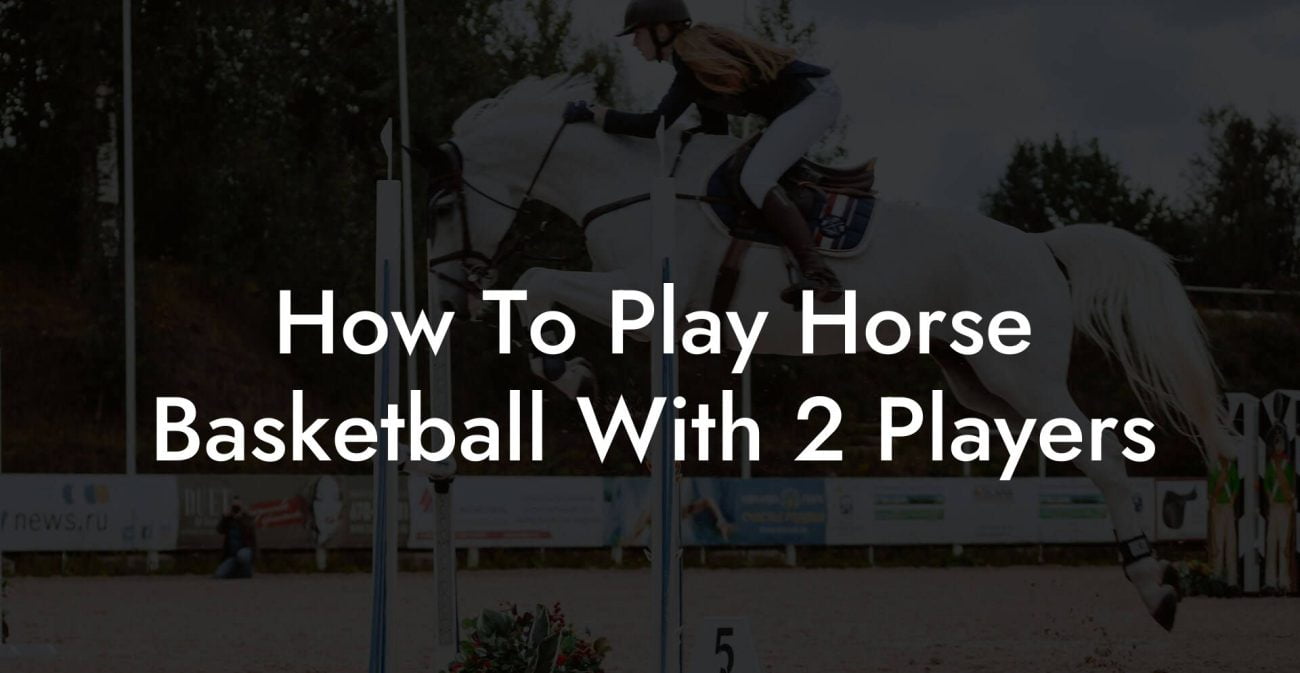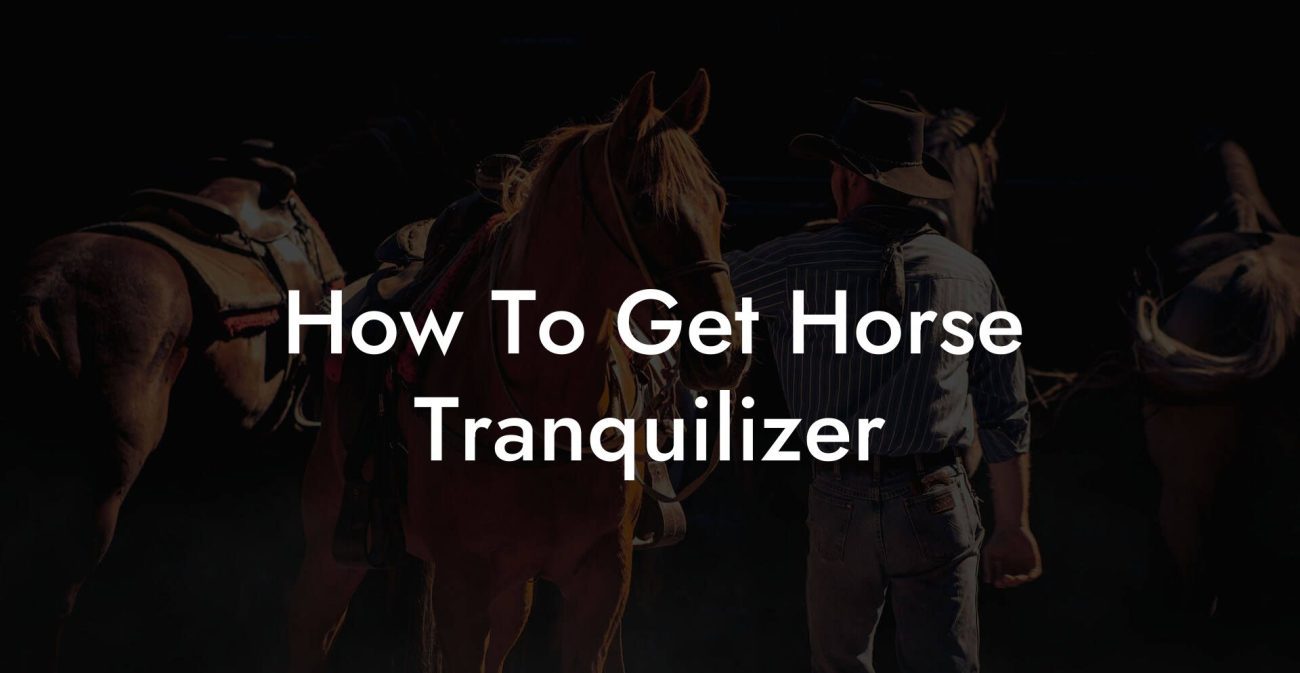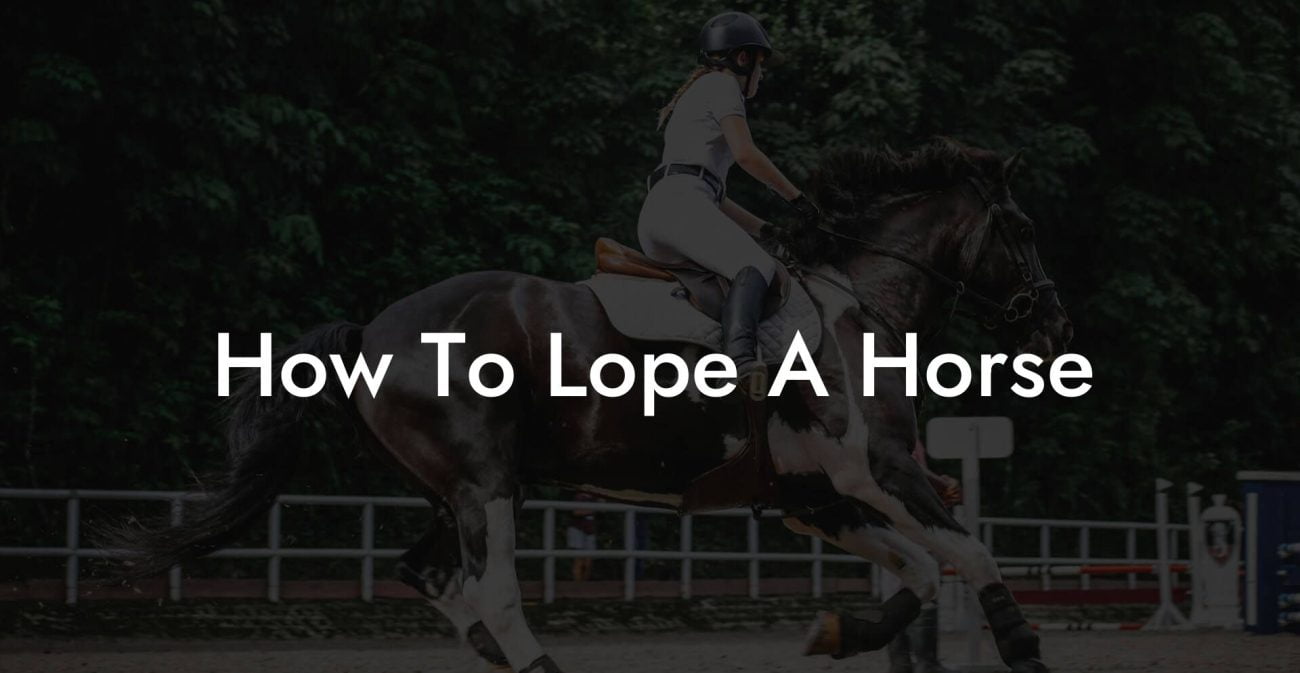Ever found yourself scrolling through TikTok only to see a majestic horse confidently strutting along, seemingly hobbled into a chill, low-key mode, and thought, “Damn, I wish my horse could be that effortlessly cool”? Welcome to the wild, witty, and surprisingly enlightening world of hobble training a horse. This isn’t about hobbling your horse like a clumsy clown in a circus (nope, we’re all about safety and care here); it’s about understanding a unique method of training that can help your equine friend move at a relaxed pace and develop better focus, balance, and trust. So, saddle up as we dive into the ins and outs, the dos and decidedly humorous don’ts, and the step-by-step guide on how to hobble train a horse that Gen-Z and millennial horse lovers alike will appreciate.
Quick Links to Useful Sections
- What Is Hobble Training a Horse?
- Why Hobble Train Your Horse?
- Understanding the Equine Mind: How Horses Learn
- Essential Tools and equipment for Successful Hobble Training
- Step-by-Step Guide to Hobble Training Your Horse
- Step 1: Prepare Your Environment
- Step 2: Establish a Connection
- Step 3: Introduce the Hobbles Gradually
- Step 4: Secure the Hobbles
- Step 5: Monitor and Guide
- Step 6: Gradually Increase Duration
- Step 7: Release and Reward
- Overcoming Challenges: Common Pitfalls and How to Avoid Them
- Challenge 1: Resistance to the Hobbles
- Challenge 2: Sudden Movement or Panic
- Challenge 3: Equipment Malfunctions
- Challenge 4: Inconsistent Results
- Integrating Complementary Techniques in Hobble Training
- Mindfulness and Calming Music
- Gentle Stretching and Warm-Up Routines
- Positive Reinforcement and Interactive Play
- Case Studies: Real-Life Success Stories in Hobble Training
- Case Study 1: From Restlessness to Relaxation
- Case Study 2: A Smooth Recovery Through Structured Training
- Case Study 3: Building Trust Through Gentle Guidance
- Resources and Community Support: Your Next Steps
- Your Journey to Empowered, Happily Hobble-Trained Equines
- Hobble Training FAQs: Your Equine Queries Answered
What Is Hobble Training a Horse?
Hobble training is a specialized equine training method designed to gently restrict the horse’s movement for short periods. The goal is to help the horse learn to pace itself, develop better balance and coordination, and gradually build trust with its handler. Far from being a tool of confinement or punishment, hobbles, when used correctly, are meant to be a temporary aid that encourages the horse to calm down, focus on gentle movement, and understand boundaries.
Essentially, hobble training involves the use of specially designed straps or lightweight cords that are carefully applied around the horse’s legs. These hobbles are adjustable and are applied for a limited time under close supervision. The idea is to create a sense of limitation that pushes the horse towards more controlled movements, without causing discomfort or stress. In a nutshell, hobble training can be a stepping stone to more advanced training techniques and can play a crucial role in rehabilitating horses recovering from injuries or those needing a gentle introduction to controlled movement.
For horse enthusiasts who keep up with the latest trends in animal care, hobble training is yet another way of saying, “I care about my horse’s well-being and want them to live their best life!” And yes, while it may sound old-school, there’s a reason why this method has been embraced by experts and passionate equine owners around the globe. It’s all about finesse, proper technique, and a deep understanding of the equine mind.
Why Hobble Train Your Horse?
In today’s fast-paced world, even our four-legged friends can sometimes get a little too wound up. Hobble training offers a multitude of benefits, making it a valuable addition to your horse care repertoire. Here’s why you might consider hobble training as part of your equine training journey:
- Enhanced Focus and Calmness: By limiting excessive movement, horses learn to relax and concentrate on the task at hand. This training technique can help reduce anxiety and overexcitement, particularly in high-energy horses.
- Injury Recovery and Prevention: For horses recovering from limb injuries or those prone to strains, hobble training facilitates controlled movement and minimizes the risk of re-injury. It also provides a safe way to build strength and coordination.
- Building Trust and Communication: Using hobbles correctly requires clear communication between you and your horse. This process fosters trust, as your horse learns to rely on your guidance and care.
- Foundation for Advanced Training: Hobble training can act as a preparatory step for introducing other, more intricate training techniques. It conditions the horse’s body, making it more receptive to future lessons in balance and obedience.
- Stress Relief for Both Horse and Handler: A relaxed horse is a happy horse, and a calm equine partner often leads to a more enjoyable training session. This not only benefits the animal but also takes the edge off for you as a handler.
The modern horse owner is all about holistic care, balancing physical health with mental and emotional well-being. Hobble training fits perfectly into this paradigm, offering a multidimensional approach that addresses both the physicality of controlled movement and the psychological benefits of mindfulness and relaxation. It’s a win-win situation for horses and their human companions.
Understanding the Equine Mind: How Horses Learn
Let’s be real: horses are not just big, majestic animals, they’re sentient beings with unique personalities and complex minds. Understanding how a horse learns is the key to any successful training process, hobble training included. At its core, equine learning involves a mix of instinct, habit formation, and a keen sensitivity to the environment.
Horses are highly social creatures, wired to respond to body language, tone of voice, and subtle cues. They thrive on routine and clear boundaries and are quick to pick up on consistency and gentle guidance. When you introduce hobbles in a training session, you’re essentially asking your horse to interpret a temporary change in their range of motion as a chance to focus and engage with you more calmly.
Think of it like this: if you were suddenly forced to slow down on a morning run, you’d naturally pay closer attention to your surroundings, your pace, and even your temperature. The same goes for horses. When their movement is deliberately moderated, they have an opportunity to reset their mental focus, creating space for deeper communication and understanding between you and your equine friend.
By tapping into the natural learning processes and the strong bond between you and your horse, hobble training becomes an empowering tool. It’s less about restriction and more about intentional guidance, creating a safe environment where your horse can thrive without anxiety or resistance.
Essential Tools and equipment for Successful Hobble Training
Let’s talk gear. In the world of hobble training, having the right equipment is as essential as having a reliable Wi-Fi connection (and we all know how important that is). The tools you choose can significantly impact the success of your training sessions and the overall comfort of your horse.
Here is a roundup of some must-have tools and equipment for hobble training:
- Adjustable Hobbles: The cornerstone of this training methodology, adjustable hobbles are designed to fit snugly without causing discomfort. Look for hobbles made from soft, durable materials that can be easily adjusted to accommodate different leg sizes and horse shapes.
- Padding and Protective Gear: To prevent chafing or accidental pressure points, equip your setup with padded straps. Some horse owners even invest in custom-made padding that offers extra protection.
- Quick Release Mechanisms: Safety is paramount. Quick release features allow you to remove the hobbles rapidly in case your horse shows signs of stress or if an emergency arises.
- Halters and Lead Ropes: A reliable halter and lead rope are essential for guiding your horse into and out of the hobble training process. These tools aid in communication and ensure a smooth transition during each session.
- Training Journal or App: Documenting progress is a great way to stay motivated and track what works best for your horse. Use a training journal or one of the many equine training apps available to record sessions, challenges, and small victories.
- Comfortable Environment: While not a physical tool, having an ideal training space, think soft footing, open pastures, and low distractions, can make all the difference in the success of your hobble training endeavors.
The beauty of this training method is that it marries modern equine technology with time-tested principles of gentle discipline. Just as your favorite influencer curates the perfect aesthetic for their feed, curating the right environment and tools for your horse can result in a training experience that is both effective and enjoyable. Remember, the goal is to create a relaxed, safe, and controlled setting where your horse feels secure enough to embrace the challenge.
Step-by-Step Guide to Hobble Training Your Horse
Ready to embark on this equine adventure? Here’s a detailed, step-by-step guide to hobble training your horse, ensuring that each session is as enjoyable and productive as binge-watching your favorite series on a lazy Sunday.
Step 1: Prepare Your Environment
Choose a calm, enclosed area for the training session. A flat, even surface is ideal, no rocky terrains that could trip up your four-legged buddy. Ensure there are minimal distractions, and that the area is free from other animals or loud noises. Set up your equipment beforehand so that everything is easily accessible.
Step 2: Establish a Connection
Before applying any hobbles, spend a few minutes simply bonding with your horse. A gentle grooming session or some quiet, calm talk can work wonders. Let your horse feel your presence and your intention to work together, this step sets the tone for the entire training session.
Step 3: Introduce the Hobbles Gradually
Start by lightly touching the straps or cords on your horse’s legs. This helps your horse become familiar with the material and the sensation. Offer positive reinforcement, tasty treats, soothing words, or a pat on the neck. It’s all about creating a positive association with what might otherwise seem like an alien object.
Step 4: Secure the Hobbles
When your horse appears comfortable with the equipment, carefully secure the hobbles around one leg at a time. Maintain a relaxed and confident demeanor, ensuring your horse knows that it’s safe. It’s crucial to adjust the fit so that it restrains movement without causing any pain or discomfort.
Step 5: Monitor and Guide
With the hobbles in place, guide your horse through a series of slow, deliberate movements. Walk alongside, offering gentle cues and plenty of praise. Your goal here is to help your horse adapt to the temporary limitation, reinforcing controlled movements and patience. Periodically check the fit of the hobbles and the horse’s reaction, look for signs of stress versus calm concentration.
Step 6: Gradually Increase Duration
In the beginning, limit the training session to a few minutes. As your horse becomes more accustomed to the sensation, you can incrementally increase the duration. Consistency and patience are key; the aim is to slowly build your horse’s tolerance and trust in the process.
Step 7: Release and Reward
At the end of each session, remove the hobbles and lavish your horse with rewards, be it their favorite treat or an extra scratch behind the ears. This closing gesture reinforces the success of the session and sets a positive precedent for future training. Always end on a high note, letting your horse know that they’ve done a fantastic job.
This step-by-step guide is designed to adapt to your horse’s pace and personality. Every horse is unique, so feel free to tweak the sequence and timing as needed. The underlying principles remain the same: patience, consistency, and a whole lot of love. With time, your horse will not only learn to accept the hobbles but might even come to rely on the structure and security they provide.
Overcoming Challenges: Common Pitfalls and How to Avoid Them
Let’s face it: even the best training plans can hit a snag now and then. Whether you’re a first-time horse owner or a seasoned equestrian, you might encounter some roadblocks along your hobble training journey. Here are some common challenges and tips on how to bypass them with humor, ingenuity, and a dash of creative problem-solving.
Challenge 1: Resistance to the Hobbles
It’s not unusual for a horse to show initial resistance when introduced to a new sensation. If your equine companion seems fidgety or anxious, stop the session immediately and go back to the basics, reintroduce the hobbles slowly, pair them with plenty of positive reinforcement, and give plenty of time for adjustment. Over time, consistency will help your horse associate the hobbles with comfort rather than confinement.
Challenge 2: Sudden Movement or Panic
A startled horse can sometimes react with unanticipated movements. Always be prepared with a backup plan, such as a spacious area where your horse can safely regain composure. Slow down your approach, use a soothing tone, and if needed, have another experienced handler by your side to provide calming support.
Challenge 3: Equipment Malfunctions
Even the best gear can sometimes surprise you with a malfunction. Always check the condition of your hobbles, straps, and release mechanisms before each session. Regular maintenance is key, treat your training equipment like you would your favorite pair of sneakers: clean, adjust, and replace when necessary.
Challenge 4: Inconsistent Results
Not every session will be a masterpiece. Some days, your horse may be all in, and other days, it might be a no-go. The key is to maintain a consistent schedule and adjust training duration based on your horse’s daily mood and health. Document your sessions, noting what works and what doesn’t, so that you can identify patterns and tweak your approach accordingly.
The secret ingredient in overcoming these challenges is not to lose your cool. Just as you’d laugh off a misadventure on your favorite social media platform, approach setbacks with a sense of humor and a willingness to learn. Every challenge is an opportunity for growth, for both you and your horse.
Integrating Complementary Techniques in Hobble Training
In the age of self-care and holistic well-being, why not give your hobble training sessions an extra dose of zen? Integrating complementary techniques can boost your horse’s comfort level and add a splash of modern flair to your routine.
Mindfulness and Calming Music
Just as you might listen to lo-fi beats while studying or working, try playing some soft, calming tunes during your training session. The soothing sounds can help ease your horse’s anxiety, creating an atmosphere of tranquility and focus.
Gentle Stretching and Warm-Up Routines
Before you even think about applying the hobbles, engage your horse in some light stretching exercises. Encouraging your horse to warm up not only prepares its muscles for training but also builds a sense of routine and anticipation for the session.
Positive Reinforcement and Interactive Play
Pairing training with play is a recipe for success. Use treats, verbal praise, or even a fun game of “follow the leader” to create positive associations. When your horse begins to associate the hobble training with fun and rewards, the process becomes less of a chore and more like a captivating game.
These complementary techniques aren’t just trendy add-ons, they enhance the overall effectiveness of the hobble training process. By nurturing a calm, mindful state in your horse, you’re not only improving its performance during training but also deepening the bond you share.
Case Studies: Real-Life Success Stories in Hobble Training
Let’s get real: nothing speaks to the success of a training method like actual stories from the field. Here are a few illustrative case studies that showcase how hobble training made a transformative impact on horses and their owners:
Case Study 1: From Restlessness to Relaxation
Meet Bella, a spirited mare known for her high energy levels and a tendency to dash around like she’s in a never-ending race. Bella’s owner, Jamie, a self-proclaimed horse whisperer with a modern twist, decided that the traditional training methods just weren’t cutting it for this free spirit. Introducing hobble training into Bella’s routine, Jamie gradually built up Bella’s tolerance to a controlled pace. With consistent exposure and a fun mix of calming playlists and gentle grooming sessions pre-training, Bella transitioned from a jittery speedster to a more composed and focused companion. The results? More balanced workouts, fewer misadventures, and a horse who now enjoys a quieter, more mindful trot.
Case Study 2: A Smooth Recovery Through Structured Training
Then there’s Rocky, a dependable gelding recovering from a minor leg injury. Post-recovery, his veterinarian recommended a training regimen that would prevent overexertion while rebuilding strength. His owner, Taylor, embraced hobble training as the cornerstone of Rocky’s rehabilitation program. By slowly introducing adjustable hobbles in controlled sessions, supplementing with gentle stretching and praising every small victory, Rocky’s progress was remarkable. Over a matter of weeks, his movements became more synchronized, his muscle tone improved, and his overall confidence soared. Taylor’s blend of discipline and tender care transformed a healing process into a mutually rewarding journey.
Case Study 3: Building Trust Through Gentle Guidance
Finally, consider Shadow, a mare with a history of anxiety around sudden changes. Shadow’s previous training sessions were marred by resistance and stress responses. Enter a new era of training: a tailored hobble training program featuring gradual exposure, interactive rewards, and plenty of calm, one-on-one time. Shadow’s owner, Alex, monitored each step vigilantly, adjusting the schedule to match Shadow’s comfort level. Over time, Shadow began not only tolerating the hobbles but actually trusting that the temporary restraint was a precursor to a treat or a bit of extra affection. This shift in attitude signified not just improved training performance but also a deeper, empathetic understanding between horse and handler.
These case studies underscore an essential truth: when applied with care, patience, and a sense of humor, hobble training can revolutionize the way your horse moves, interacts, and finds calm in the midst of chaos.
Resources and Community Support: Your Next Steps
Now that you’re armed with a wealth of knowledge on how to hobble train a horse, it’s time to connect, share, and take action. In today’s digitally connected world, resources and community support are just as essential as the techniques described above. Whether you’re a seasoned equestrian or a greenhorn stepping into the arena, these resources will help you fine-tune your training methods and ensure you and your horse get the best care possible.
Equine Training Forums and Online Communities: Platforms like TheHorseForum, Reddit’s r/equestrian, and specialized Facebook groups are treasure troves of firsthand experiences and advice from fellow horse lovers. Engage with these communities to ask questions, share success stories, and even troubleshoot challenges.
Workshops and Webinars: Look for local or online workshops that focus on modern horse training techniques. Many organizations now offer webinars tailored specifically to younger audiences, blending traditional skills with modern technology and humor.
Veterinary and Equine Specialist Consultations: Never underestimate the power of professional guidance. Regular consultations with equine veterinarians and training specialists can provide bespoke advice tailored to your horse’s unique personality and needs.
Social Media and Influencer Insights: Follow top equine influencers on platforms like Instagram, TikTok, and YouTube. These modern-day role models share quick tips, behind-the-scenes training sessions, and innovative approaches to horse care that can inspire and educate.
Books and Digital Resources: For those who love a deep dive, there are plenty of eBooks, podcasts, and digital articles dedicated to equine training and care. Look for titles that blend humor, science, and practical wisdom to keep you engaged and informed.
No matter where you are on your equine journey, remember that you are part of a vibrant, supportive community. Connecting with fellow enthusiasts not only bolsters your confidence but also opens the door to continuous learning and shared inspiration. It’s all about sharing the love for our four-legged friends and elevating horse care to a higher level of compassion and efficiency.
Your Journey to Empowered, Happily Hobble-Trained Equines
Embracing hobble training is not just about managing movement, it’s about embarking on a transformative journey with your horse. It demands patience, creative problem-solving, and a willingness to explore unconventional methods. The process is empowering: empowering you as a handler to be gentle yet firm, resourceful yet caring, and your horse to trust, to relax, and to flourish under your guidance.
Whether you’re looking to help an injury recovery, instill a sense of calm in a high-energy companion, or simply experiment with innovative training techniques, hobble training offers a path that combines traditional wisdom with a modern, Gen-Z and millennial-friendly twist. With every session, every small breakthrough, you’re building a relationship defined by trust, empathy, and mutual growth.
So, as you gear up for your next training session, remember: the journey of a thousand trotting steps begins with a single, well-placed hobble, an honest reminder that in the dance between freedom and discipline, harmony is always the ultimate goal.
Embrace the challenge, lean into the humor of the missteps, and celebrate every moment of progress. Your journey to empowered, happily hobble-trained equines is just beginning, get out there and make it legendary!
Hobble Training FAQs: Your Equine Queries Answered
Here are some frequently asked questions about hobble training a horse, designed to address any queries you might have and help you navigate your training journey with confidence.
1. What exactly is hobble training, and does it hurt my horse?
Hobble training is a method of temporarily restricting a horse’s movement using adjustable, padded hobbles. When applied correctly, it is a gentle technique meant to promote calmness and controlled movement without causing any pain or discomfort.
2. How long should each hobble training session last?
Beginners should start with short sessions, typically just a few minutes. Over time, as your horse adapts and shows signs of relaxation, you can gradually extend the duration.
3. Can hobble training help with an injured horse?
Absolutely. Hobble training can be an excellent way to help an injured horse move safely by reducing the risk of overexertion while building strength and coordination.
4. What are the key benefits of hobble training?
Beyond promoting calmness, hobble training can enhance focus, build trust between horse and handler, and serve as a foundational technique for more advanced equine training methods.
5. Is hobble training suitable for all types of horses?
While many horses can benefit from this training, it is important to tailor the approach to each horse’s unique temperament, physical condition, and training needs. Consulting with an equine specialist can help determine the best strategy for your horse.
6. How do I ensure that the hobbles fit properly?
Always use adjustable, padded hobbles and check that they are snug but not tight. Regularly inspect the equipment and adjust it as necessary to ensure maximum comfort and safety.
7. What should I do if my horse shows signs of stress during hobble training?
Stop the session immediately. Remove the hobbles, comfort your horse, and try reintroducing the training more gradually. Patience and positive reinforcement are key.
8. Can I combine hobble training with other training techniques?
Yes, hobble training works best when combined with complementary methods such as mindfulness practices, stretching routines, and positive reinforcement. This holistic approach can improve both physical and mental well-being.
9. Where can I find more resources or community support?
Check out online equine forums, social media groups dedicated to horse training, or attend equine training workshops and webinars.
10. How do I know if hobble training is right for my horse?
Every horse is unique. Consult with an equine trainer or veterinarian to assess your horse’s individual needs and temperament before beginning hobble training.

